Introduction
The foodservice industry is undergoing rapid transformation, and in 2025, one of the most practical solutions leading this shift is the commercial kitchen trailer. Unlike traditional food trucks, these units aren’t limited to quick-service menus, they are fully equipped, code-compliant commercial kitchens on wheels, designed to handle high-volume cooking with the same efficiency as a permanent facility.
For chefs, caterers, and hospitality operators, commercial kitchen trailers deliver a rare combination of mobility, cost savings, and speed to market. They can be deployed in days rather than months, making them ideal for expanding into mobile catering and event services, supporting festivals, concerts, and sporting events, or serving as turnkey temporary kitchens during hotel, resort, or restaurant renovations.
In fact, the global food truck and mobile kitchen market is projected to grow to $4.36 billion in 2025, driven by demand for flexible, mobile, and cost-effective foodservice solutions.
Understanding modern kitchen trailer designs in 2025 is essential if you want to maximize your investment and choose the right solution for your operation. In this article, we’ll break down what a commercial kitchen trailer is, why the design matters, the essential elements that set it apart, and how rentals, especially premium solutions like Mobile Culinaire, are helping operators succeed in 2025.
What Is a Commercial Kitchen Trailer?
A commercial kitchen trailer is a fully mobile food production facility built within a trailer structure. Unlike smaller food trucks designed for limited menus, kitchen trailers provide greater interior space, higher-capacity equipment, and expanded utility systems, allowing operators to prepare and serve food at the same scale as a fixed-location kitchen.
These units are engineered for compliance and efficiency, typically including:
- Cooking appliances such as ranges, fryers, ovens, and griddles.
- Cold storage with reach-in refrigerators and freezers.
- Dedicated prep areas for safe food handling and workflow.
- Sanitation facilities, including sinks and waste management systems, to meet health code requirements.
Because of their larger footprint and advanced setup, commercial kitchen trailers are suitable for high-volume catering, festivals, emergency response operations, and temporary hospitality solutions. They combine the freedom of mobility with the full capabilities of a permanent commercial kitchen.
Why Commercial Kitchen Trailer Design Matters
For luxury resorts, hotels, and high-volume caterers, a standard food trailer simply isn’t enough. Guests and clients expect seamless, high-quality dining experiences, regardless of whether a property is undergoing renovations, hosting a large event, or operating in a temporary setting.
This is where design becomes critical. A well-designed commercial kitchen trailer ensures that:
- Menu consistency is maintained, allowing chefs to replicate the same quality and variety offered in permanent kitchens.
- Workflow efficiency is optimized, with layouts tailored for high-volume production, staff ergonomics, and food safety compliance.
- Brand reputation is protected, as guests experience no drop in service standards, even in unconventional or temporary environments.
- Regulatory compliance is assured, with built-in sanitation, ventilation, and safety systems that meet health codes and fire safety requirements.
In the competitive hospitality sector, where reputation is everything, the design of a commercial kitchen trailer directly impacts operational success. A poorly planned unit can create bottlenecks, compromise food safety, and weaken the guest experience. By contrast, a premium, purpose-built trailer supports efficiency, consistency, and brand integrity, making it an essential investment for luxury foodservice operations in 2025.
.avif)
Design Elements of a Commercial Kitchen Trailer
Design is what separates a basic food trailer from a high-performing commercial kitchen trailer. In 2025, operators are prioritizing layouts, materials, and utility systems that maximize safety, efficiency, and compliance, while still preserving the mobility these units are built for.
Layout & Workflow Efficiency
A well-designed trailer follows the classic commercial kitchen workflow zones: storage, prep, cooking, service, and cleaning. Modern units increasingly adopt linear or galley-style layouts, which minimize backtracking and maximize usable space. Strategic equipment placement allows multiple staff to work simultaneously without collisions, cutting service times and reducing food-safety risks.
Key trend (2025): Commercial kitchen trailers are adopting modular and mobile layouts that allow equipment to be reconfigured for different menus or event types, giving operators more flexibility without losing efficiency.
Materials & Durability
Durable, food-safe materials are non-negotiable. Industry standards include stainless steel counters, fire-resistant wall panels, and non-slip insulated flooring. These not only extend the trailer’s lifespan but also simplify sanitation and ensure fire safety and health code compliance.
Key trend (2025): Many trailers are incorporating eco-friendly finishes and recyclable insulation materials, aligning with sustainability initiatives in the foodservice sector.
Utility Systems
A commercial kitchen trailer must function as a self-sufficient, code-compliant facility. Premium designs typically feature:
- Power systems: generator hookups, shore power connections, and now hybrid solar-assist systems that lower fuel consumption.
- Water management: fresh-water tanks, greywater storage, and backflow-prevention systems to maintain compliance.
- Ventilation & fire suppression: code-approved exhaust hoods, HEPA filtration, and wet-chemical fire suppression systems.
Key trend (2025): Smart utility monitoring lets operators track energy use, water levels, and ventilation performance in real time, often through mobile apps.
Mobility & Accessibility
Mobility remains at the core of trailer design. Units are built with reinforced chassis and shock-absorbing suspension to withstand long-distance towing. Accessibility is equally prioritized, with ADA-compliant ramps, wide entry doors, and adjustable access systems to ensure safe, inclusive operation.
Key trend (2025): Urban-ready trailers are using compact footprints with fold-out service areas, balancing mobility with full kitchen functionality in city environments.
%20(1)%20(1).avif)
Technology & Smart Integration
In 2025, commercial kitchen trailers are evolving into digitally connected kitchens. Operators are embracing:
- IoT-enabled appliances that self-monitor for performance and maintenance.
- Digital food safety systems that automate HACCP compliance, logging temperatures and issuing alerts.
- Remote dashboards to control lighting, refrigeration, and power loads via smartphone.
Key trend (2025): Trailer kitchens are increasingly IoT-driven, with operators leveraging digital tools to cut downtime, streamline compliance, and optimize efficiency.
Safety & Compliance
Safety is the foundation of any commercial kitchen trailer design. Beyond layout and workflow, every unit must integrate:
- Fire protection: Class K extinguishers and built-in suppression systems.
- Sanitation compliance: NSF-certified prep surfaces, 3-compartment sinks, and wastewater management.
- Worker safety & accessibility: ADA compliance, ergonomic workstations, non-slip flooring, and emergency exits.
Key trend (2025): Energy-efficient appliances and compliance-focused systems are becoming standard, helping operators cut utility costs by up to 20% annually while staying ahead of evolving health and safety codes.
%20(1)%20(1).avif)
Essential Food Trailer Equipment
Equipping a commercial kitchen trailer isn’t just about meeting code, it’s about choosing the right tools to deliver consistent, high-quality service in a compact space. In 2025, operators are prioritizing multi-purpose, space-saving, and energy-efficient equipment that stretches investment dollars while supporting versatile menus.
Cooking Equipment
Cooking appliances form the backbone of production capacity. Trailers often include:
- Ranges and griddles for versatile menu prep.
- Deep fryers for fast, high-volume service.
- Combi ovens (convection + steam) for multi-purpose use.
- Charbroilers or grills for smoky flavor profiles.
Cost range: $3,000–$12,000 depending on size and features.
Key trend (2025): Operators are replacing multiple single-use appliances with combi ovens and induction units, saving both space and fuel costs.
Refrigeration & Cold Storage
Proper cold storage is essential for food safety. Typical setups include:
- Reach-in refrigerators/freezers for bulk storage.
- Undercounter refrigeration for line efficiency.
- Prep tables with integrated cooling wells for fresh ingredients.
Cost range: $2,000–$8,000 per unit.
Key trend (2025): Smart refrigeration with digital temperature logging is becoming standard, simplifying HACCP compliance and reducing spoilage.
Prep Surfaces & Stations
Preparation areas need to maximize usable space while meeting sanitation requirements.
- NSF-certified stainless steel counters for safe food handling.
- Modular prep tables that can be reconfigured per menu.
- Integrated shelving to save space.
Cost range: $1,000–$4,000 depending on configuration.
Key trend (2025): Modular prep stations are on the rise, giving operators flexibility for pop-up events and seasonal menus.
Sanitation Systems
Sanitation is central to compliance and customer trust. A standard setup includes:
- Handwashing sinks with hot and cold water.
- Three-compartment sinks for warewashing.
- Fresh and greywater tanks sized for extended operations.
Cost range: $2,000–$5,000 including tanks and plumbing.
Key trend (2025): Trailers are adopting touchless sinks and onboard filtration systems to exceed rising health-code expectations.
Ventilation & Fire Safety
Trailers must be engineered for safe operation in compact spaces. Systems typically include:
- Commercial exhaust hoods sized for trailer dimensions.
- Wet-chemical fire suppression systems.
- Class K fire extinguishers as backup.
Cost range: $5,000–$15,000 depending on hood size and suppression system.
Key trend (2025): Advanced hoods with variable-speed fans and real-time airflow sensors are cutting energy use while improving safety.
.avif)
Mobile Kitchen Rentals: A Smart Alternative in 2025
Not every operator needs or wants to invest in purchasing a commercial kitchen trailer outright. In 2025, many foodservice businesses are turning to mobile kitchen rentals as a faster, more cost-effective way to meet demand. Rentals deliver the same high-capacity functionality as owned trailers, but with added flexibility and significantly lower upfront costs.
Why rentals make sense in 2025:
- Speed to market: Deploy a fully equipped kitchen in days instead of waiting months for construction or custom builds.
- Lower capital investment: Rentals eliminate six-figure build costs, making them ideal for temporary or seasonal operations.
- Scalability: Expand for large events, festivals, or peak-season demands, then scale back down when volume decreases.
- Turnkey compliance: Rental units come pre-approved with fire suppression, sanitation, and ventilation systems that pass inspection.
- Risk reduction: Rentals let you test new markets or service models without long-term commitments.
In today’s competitive environment, renting a mobile kitchen trailer offers agility and peace of mind, ensuring operators can respond quickly to opportunities or challenges without heavy upfront investment.
What Sets Mobile Culinaire Apart in Trailer Kitchen Design
While many providers offer rentals, Mobile Culinaire stands apart by delivering premium, purpose-built trailer kitchens that match the efficiency and reliability of permanent facilities. Every unit is engineered to protect food quality, staff safety, and guest satisfaction. Here’s how our design approach makes the difference:
Ergonomic Design
Staff comfort and workflow are essential in mobile environments. Trailers feature optimized counter heights, logical equipment placement, and clear traffic zones that minimize fatigue and keep service running smoothly.
Turnkey Delivery
Each Mobile Culinaire rental arrives fully equipped and code-compliant, with fire suppression, ventilation, and sanitation systems already in place. Operators can get cooking within days and no lengthy build-outs are required.
Durable & Easy-to-Clean Finishes
All surfaces are built with food-grade stainless steel, fire-resistant panels, and non-slip flooring, ensuring fast sanitation, long-term durability, and compliance with health codes.
Optimized Space with Built-In Storage
Smart storage solutions, like under counter shelving, overhead racks, and integrated prep tables, make the most of every square foot, keeping tools and ingredients organized without sacrificing workspace.
Minimal Disruption to Guest Experience
For hotels, resorts, and event venues, continuity of service is critical. Mobile Culinaire rentals are deployed with discreet installation and professional finishes, ensuring that even during renovations, guests enjoy seamless dining experiences.
3D Design Collaboration Before You Build
Before deployment, operators can review a 3D digital model of their kitchen layout, making it easy to fine-tune details and ensure the trailer meets both brand standards and operational needs.
%20(1).avif)
Conclusion
In 2025, the commercial kitchen trailer has evolved far beyond a basic food truck. With innovations in layout, durability, equipment, technology, and compliance, these mobile kitchens now rival permanent facilities in both capacity and efficiency. For operators in hospitality, catering, and event services, the right trailer design can safeguard brand reputation, ensure regulatory compliance, and open new revenue opportunities.
At the same time, not every business wants the capital expense or long lead times of a custom build. That’s why mobile kitchen rentals have become the smart alternative as they deliver speed to market, cost savings, and operational flexibility without compromise.
With Mobile Culinaire, you get more than a temporary solution. You gain access to premium, purpose-built trailers designed around your workflow, equipped with heavy-duty appliances, and ready for inspection on day one. Whether supporting a hotel renovation, expanding into event catering, or meeting urgent foodservice needs, Mobile Culinaire provides a turnkey rental solution that protects your brand while keeping guests satisfied.
The future of foodservice is mobile, flexible, and design-driven. With Mobile Culinaire, you can be ready for it today.
Explore our rental options and discover how Mobile Culinaire can help you deploy a fully equipped commercial kitchen trailer or contact us today!
People Also Ask (FAQ)
What makes a good commercial kitchen trailer design?
A high-quality design prioritizes workflow efficiency, safety, and regulatory compliance. The best trailers are divided into clear zones (storage, prep, cooking, and sanitation) so staff can work seamlessly without collisions or bottlenecks. Materials like stainless steel, fire-resistant wall panels, and non-slip flooring ensure durability and code compliance. Just as importantly, modern designs integrate ventilation, fire suppression, and ergonomic layouts that protect both staff and guests.
How is technology influencing trailer kitchen design in 2025?
Technology has become a defining feature of commercial kitchen trailers in 2025. Units now come with IoT-enabled appliances, smart refrigeration systems with digital temperature logging, and mobile dashboards for real-time monitoring of energy, water, and ventilation. These innovations not only support HACCP compliance but also cut downtime and reduce utility costs, helping operators stay efficient while meeting evolving safety and sustainability standards.
Can commercial kitchen trailers be customized for specific menus or brands?
Yes. Unlike generic food trailers, premium providers such as Mobile Culinaire specialize in layouts designed around your menu, staff size, and service model. Operators can choose equipment configurations, brand finishes, and even preview their kitchen with a 3D design model before deployment. This ensures that whether you’re serving fine dining, large-scale catering, or quick-service events, the trailer supports both your brand identity and operational needs.
What equipment is included in a commercial kitchen trailer?
Most commercial kitchen trailers come equipped with ranges, fryers, ovens, refrigerators, prep stations, sinks, exhaust hoods, and fire suppression systems. These ensure full code compliance for high-volume cooking. In 2025, premium rentals go further by offering multi-purpose appliances like combi ovens, modular prep stations, smart refrigeration, and touchless sanitation systems. This allows operators to produce consistent, high-quality food in a compact, mobile environment while maximizing efficiency and safety.
.avif)
.svg)

.avif)
%20(1).jpg)
.jpg)
.jpg)
%20(1).jpg)
.avif)
.avif)
%20(1).jpg)
.jpeg)
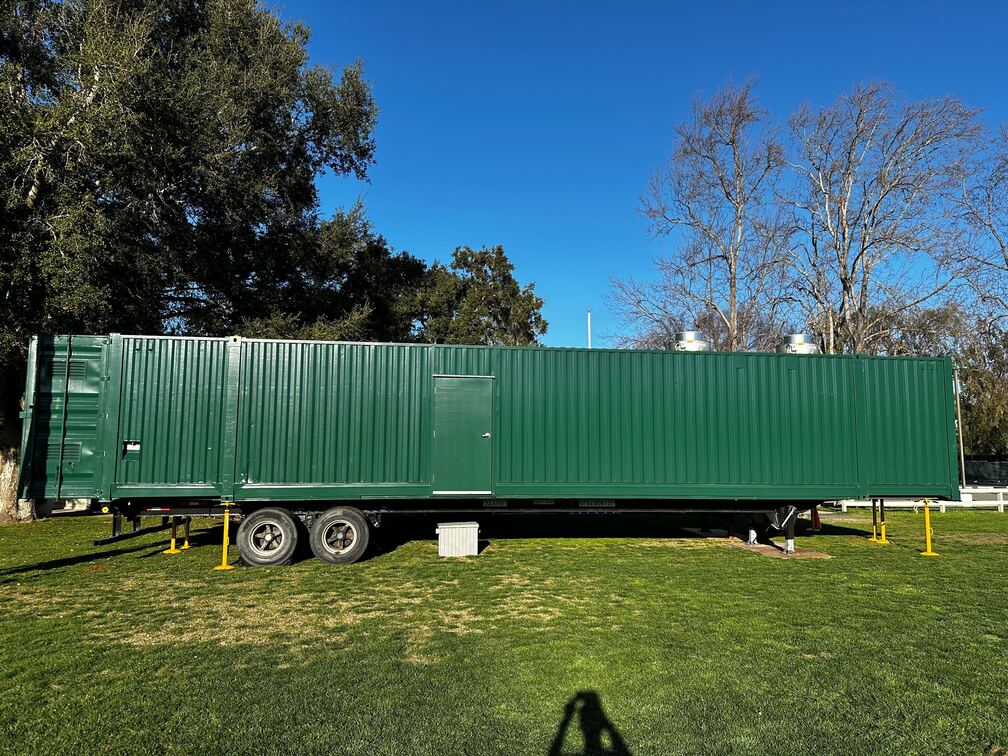
.jpeg)
%20(1).jpg)
%20(2).jpg)


%20(1).jpg)
%20(1).jpeg)
.jpg)
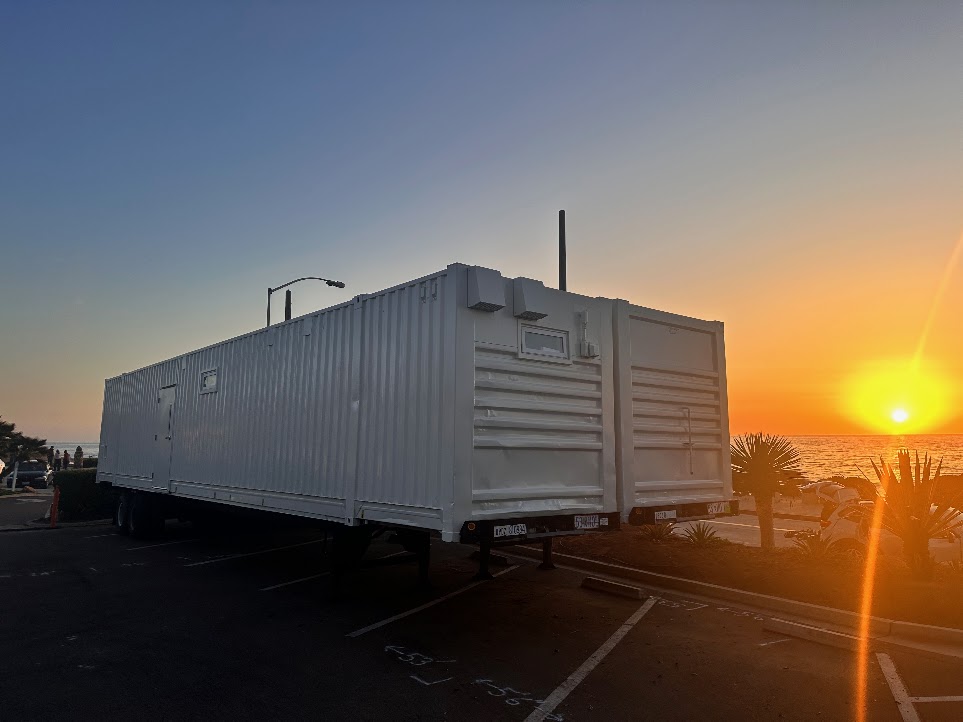

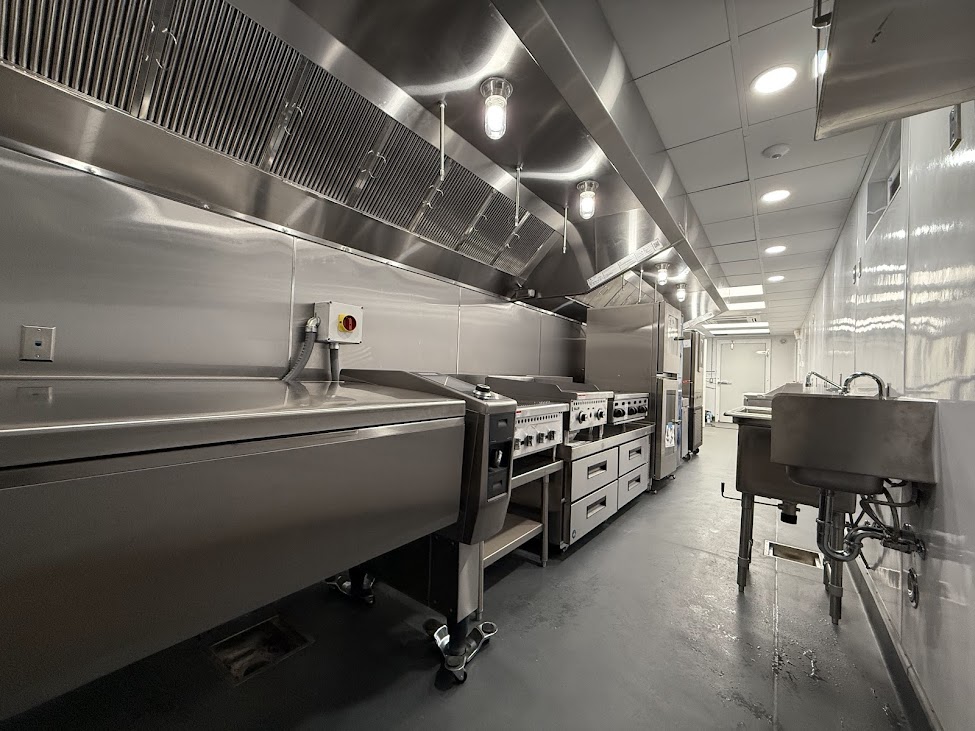
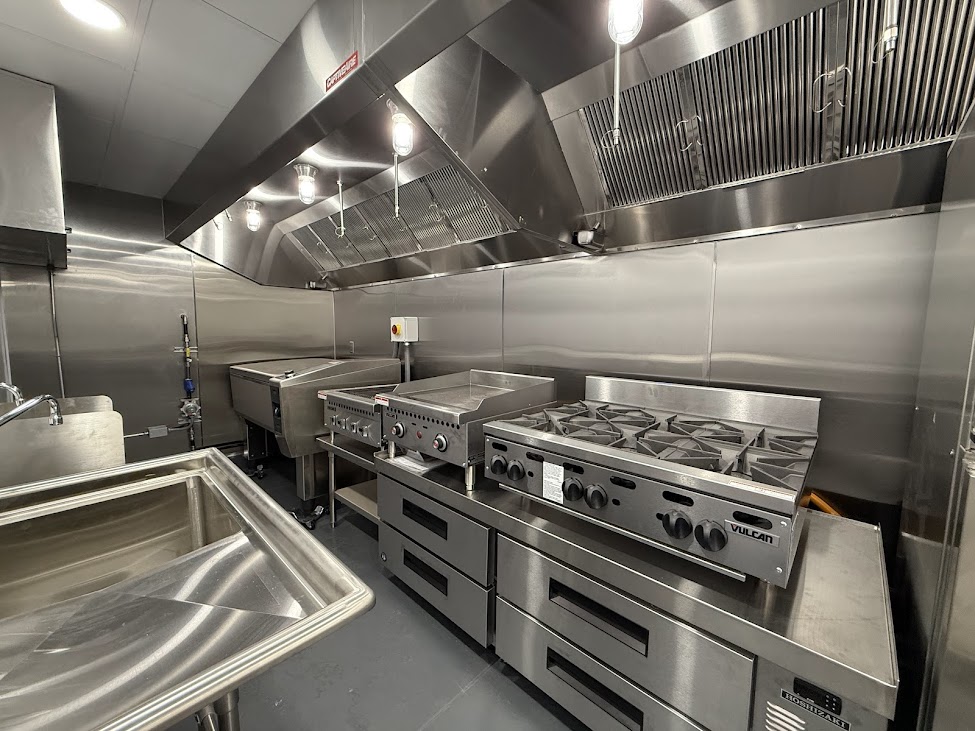
%20(2).avif)
.avif)
%20(1)%20(1).avif)
.avif)
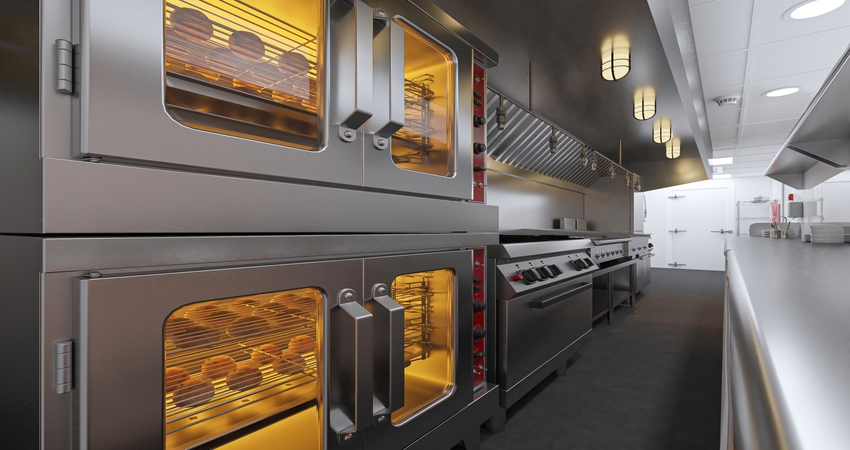
%20(1).avif)
%20(1)%20(1).avif)
%20(2).avif)
%20(1).avif)
%20(1).avif)
.avif)
%20(1)%20(1).avif)
%20(1).avif)
%20(1).avif)
%20(1).avif)
%20(1)%20(1).avif)

.svg)



